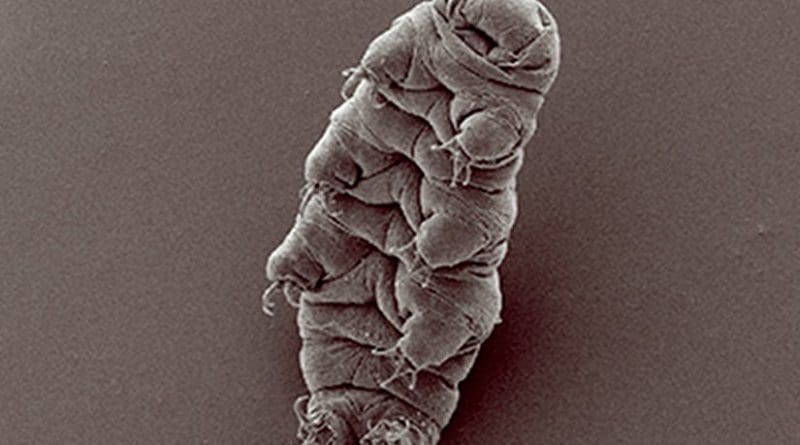Scientists Revive Microscopic Tardigrade After 30 Years Of Deep Freeze
Researchers in Japan have successfully revived a microscopic creature called a tardigrade (informally known as a ‘water bear’) that has been kept frozen for 30 years. Until this new record was set, the previous interval between freezing and reviving a tardigrade had only been nine years.
Researchers from the National Institute of Polar Research in Tokyo defrosted and revived two of the microscopic animals from a batch of samples collected from Antarctica in 1983, local Japanese media outlets report. The sample had been stored at -20 °C for just over three decades and then thawed in May 2014, in controlled conditions and over several days.
Whilst one of the revived samples died after just 20 days, the second went on to successfully reproduce, laying 19 eggs of which 14 successfully hatched.
The tardigrade is only 1 mm in length, has eight legs and a segmented body. Genetic studies have shown that they originally lived in freshwater environments before adapting to life on land where they seek out moist habitats such as soil, mosses, leaf litter and lichen.
When they’re frozen, the creatures enter a state called cryptobiosis, a form of extreme hibernation that many microscopic organisms use to survive difficult environments. The tardigrade’s metabolism slows down to less than 0.01 % of its normal level, it sheds almost all of the water in its body, and curls up into a ‘tun’ state, in essence a tiny, indestructible pellet.
It is believed that some tardigrade species replace the water in their cells with a natural antifreeze, called glyzerol, or crystalline sugars to preserve their structure. This is important as retaining water is often a source of internal harm to an organism – for example, water damages cells as it freezes.
Despite their miniscule size, tardigrades are considered one of the most resilient creatures alive today. Not only can they survive in extreme temperatures, but it has also been successfully exposed to radiation, and in 2007 the tardigrade became the first animal to survive in outer space, enduring sub-zero temperatures, a lack of oxygen and strong solar winds.
Scientists are hoping to better understand how tardigrades are able to survive such hostile conditions for so long. The next stage for the Japanese research team will be to develop a better understanding of the tardigrades’ overall long-term survival mechanism. ‘We want to unravel the mechanism for long-term survival by looking into damage to tardigrades’ DNA and their ability to repair it,’ researcher Megumu Tsujimoto commented.
However it must be noted that although the survival rate for these tardigrades was indeed impressive, they have not been able to beat the current record for survival in a frozen state. This title is currently being held by a nematode worm that managed to survive for nearly 40 years before being revived.
Source: CORDIS

